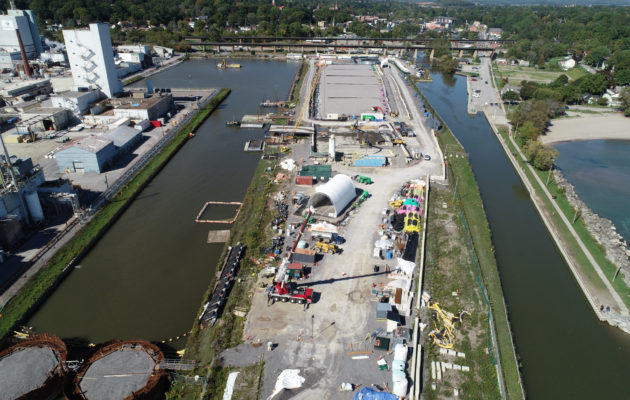
De-fishing of the inner harbour is currently underway. This is performed annually to support the dredging activities and ensure that the work is protective of aquatic life. Previous electrofishing campaigns have resulted in over 6,000 fish of varying species being safely removed and relocated to Lake Ontario outside the Inner harbour work area. Dredging activities are carefully monitored for potential impacts that were identified during the Environmental Assessment and additional mitigation measures are put in place as needed.
Early on in the dredging process, some fish were found in the sediment processing area, mainly identified as catfish. These are bottom dwelling fish that were not recovered during previous electrofishing campaigns, and which have remained in the inner harbour. As the recovered fish were discovered in the sediment dewatering area, CNL staff and contractors are unable to place the fish back into the harbour as this would constitute a safety concern for project staff. CNL has provided regular updates to all relevant regulators during the dredging activities at the Port Hope Harbour, and will continue to do so.
With the cleanup of the Port Hope Harbour completed, the expectation is that the site will be removed from the Great Lakes Areas of Concern. In addition, following the remediation phase, the harbour will undergo habitat restoration that includes improved habitat for fish and other species that exist in that region. The placement of sand, gravel, cobble and rocks in the corners of the turning basin is expected to provide habitat diversity, shelter for various fish species and promote the growth of aquatic plants.
Work in the harbour is expected to continue until January or until the weather makes it difficult to continue. As a reminder, access to the Centre Pier and the Port Hope Harbour is restricted until the cleanup ends, expected in the next four years.

